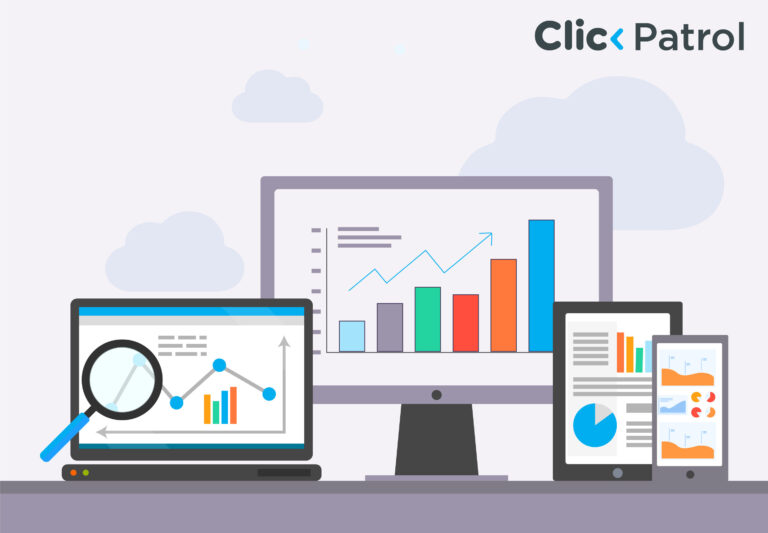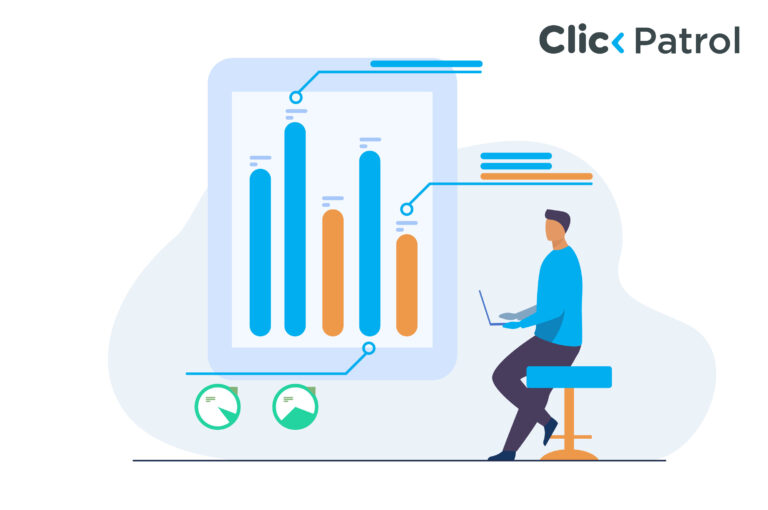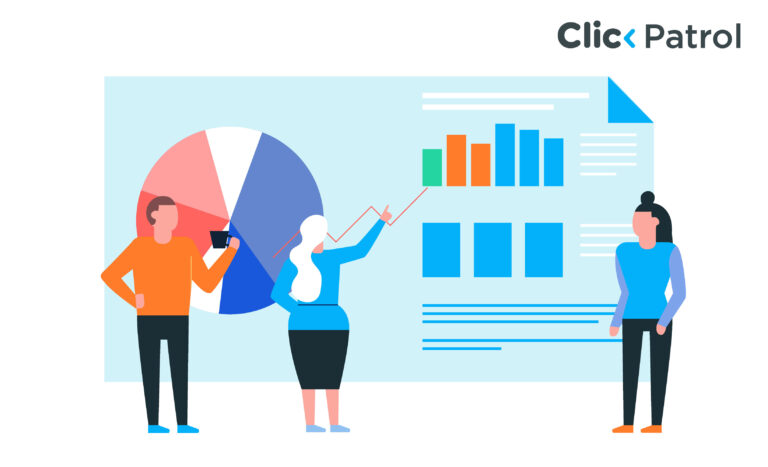
How to Implement Keyword-Level Tracking In PPC
Abisola Tanzako | Jun 06, 2024

Table of Contents
- What Is Keyword-level Tracking?
- How keyword-level tracking works
- Why keyword-level tracking matters
- How to implement keyword-level tracking
- What to consider when carrying out keyword-level tracking
- Benefits of keyword-level tracking
- Practical tips for effective keyword-level tracking
- Limitations of keyword-level tracking
- 1. Personalization and variability:
- 2. Imperfect accuracy:
- 3. Keyword volume constraints:
- 4. Cost and budget:
- 5. Keyword relevance:
- 6. Fluctuations and algorithm changes:
- 7. Limited insights:
- 8. Keyword cannibalization:
- 9. Manual effort:
- 10. Keyword seasonality:
- Using Keyword-level tracking for SEO and PPC
- FAQs
Keyword-level tracking is a key to effective search engine optimization (SEO). Assessing your virtual presence and guiding specific audiences to your website is essential. When implemented skillfully, keyword tracking can significantly enhance the visibility of your content in searches and, consequently, increase the influx of visitors to your site. This takes us to keyword-level tracking.
This advanced method of keyword tracking offers a more precise and detailed evaluation of your SEO performance compared to traditional tracking methods, which provide a broader overview. Keyword-level tracking breaks down your performance data, comprehensively analyzing your keyword positions. This article explains keyword-level tracking, discussing its functions, benefits, and best practices. Adopting these practices can improve your SEO activities and give you an advantage over your competitors.
What Is Keyword-level Tracking?
Keyword-level tracking is an essential aspect of search engine optimization (SEO) that focuses on the detailed monitoring and analysis of specific keywords or phrases within your digital marketing campaigns. This method is particularly beneficial for pay-per-click (PPC) campaigns, as it provides deep insights into the effectiveness of each keyword. By employing keyword-level tracking, marketers can identify which keywords generate valuable actions, such as inbound calls, conversions, or other key performance indicators contributing to the business’s success.
This approach offers a more subtle understanding of campaign performance than general traffic or ranking assessments. It lets you pinpoint which keywords are truly beneficial and which may require further optimization or adjustment. Keyword-level tracking provides a comprehensive view of how individual keyword phrases perform in search engines like Google, giving you a clear picture of your content’s search visibility. By understanding these dynamics, you can make informed decisions to enhance your SEO strategy and improve your content’s relevance and results.
How keyword-level tracking works
Keyword-level tracking is a precise method for scrutinizing a website’s SERP rankings for targeted keywords. It employs SEO tools like SEMrush, Ahrefs, Moz, and SERPWatcher to monitor the prominence and ranking of essential keywords within your content strategy. These platforms enable the input of keyword rosters, facilitating the tracking of their SERP positions over time. This detailed approach unveils the path of each keyword, shedding light on traffic-driving terms and those needing further refinement.
Through vigilant tracking, you can tailor your SEO strategies to support high-performing keywords, elevate the rank of lagging ones, and ultimately amplify your website’s search footprint. Such meticulous tracking is instrumental in honing your SEO initiatives for superior outcomes. Keyword-level tracking necessitates a system to align keywords with their respective website pages. This alignment is crucial for accurate data analysis, ensuring you comprehend how content fares against targeted terms. It also calls for established processes for data reporting and insight extraction. Setting up dashboards, automated reports, and regular performance reviews is critical.
Why keyword-level tracking matters
Keyword-level tracking is essential in the digital marketing landscape for several compelling reasons:
- Targeted optimization allows for the precise optimization of SEO and PPC campaigns. By knowing which words are doing well, you can focus your efforts on optimizing content and bids for those specific terms, leading to more efficient resource use.
- Enhanced performance analysis: This tracking provides detailed insights into each keyword’s performance, enabling marketers to make data-driven decisions. You can see which keywords drive traffic, conversions, and sales and adjust your strategy accordingly.
- Improved ROI: You can boost your return on investment by honing in on the most effective keywords. Keyword-level tracking helps allocate the budget to the keywords that are most likely to convert, thus maximizing the impact of your marketing spend.
- Competitive edge: keyword-level tracking gives you an edge by allowing you to be agile and responsive to changes in keyword performance. This agility can be the difference between outperforming competitors or falling behind.
- Call tracking: It pinpoints the keywords that trigger customer calls, providing valuable insights into which terms effectively generate inbound communication.
- Better user experience: Concentrating on keywords that connect with your audience can make your content more relevant and exciting, resulting in a better user experience and increased customer satisfaction.
How to implement keyword-level tracking
Keyword-level tracking involves several steps to ensure you’re effectively monitoring your SEO performance. Here’s a list with explanations:
- Keyword research: Find keywords related to your content and business objectives. Use tools like Google Keyword Planner to gain insights into search volume and competition.
- SEO tool selection: Choose an SEO tool with keyword-tracking capabilities. Popular options include SEMrush, Ahrefs, Moz, and Google Search Console.
- Keyword list creation: Compile a list of keywords you want to track. Include short and long-tail keywords to cover a broad spectrum of search intents.
- Setting up tracking: Input your keyword list into the chosen SEO tool. Configure the settings to track rankings across different search engines and geographical locations if necessary.
- Mapping keywords to content: Assign each keyword to specific pages on your website. This helps in analyzing performance data for targeted terms.
- Regular monitoring: Check your keyword rankings regularly. Most tools provide daily updates, but the frequency can be adjusted based on your needs.
- Performance analysis: Use the data to analyze which keywords are performing well and which aren’t. Search for trends and patterns that can guide your SEO plan.
- Content optimization: Based on your findings, optimize your content. Improve underperforming pages and consider creating new content for keywords that need to be targeted.
- Reporting: Set up dashboards and automated reports within your SEO tool. Review these reports regularly to stay updated on your keyword performance.
- Review and adjust: SEO is a continuous process. Review your keyword-level tracking data regularly and adapt your strategies to maintain or improve rankings.
What to consider when carrying out keyword-level tracking
When implementing keyword-level tracking, keep the following considerations in mind:
- Search volume vs. Traffic potential: Don’t rely solely on search volume; assess the traffic potential by examining the top-ranking page’s existing traffic.
- Relevance to business: Ensure the tracked keyword aligns with your company and relates to your products or services.
- Ranking feasibility: Evaluate whether your website’s authority and content quality realistically allow you to rank for the chosen keyword.
- User intent: Understand the purpose behind the keyword to create content that meets user expectations.
- Competitive landscape: Analyze competitors’ keyword performance to identify gaps and opportunities.
- SERP features: Consider how SERP features (like instant answers or “Top Stories”) might impact click-through rates.
- Content type: Identify the content type (e.g., articles, videos) that rank well for your target keyword and create similar high-quality content.
- Personalization factors: Account for personalization factors such as device type, user location, and language preferences, as they can affect visibility.
- SEO tools: Utilize SEO tools that de-personalize search results and provide an average ranking position.
- Performance metrics: Track rankings, conversions, and engagement metrics to gauge keyword effectiveness.
Benefits of keyword-level tracking
- Elaborate details: This method provides intricate details on each keyword’s performance, unlike broader campaign or ad group tracking. Such detailed data fosters more subtle and informed decision-making.
- ROI optimization: Keyword-level tracking aids in identifying which keywords excel and allows marketers to distribute their budgets judiciously, enhancing the return on investment. This strategic allocation ensures that funds are invested in areas most likely to yield profitable returns.
- Conversion insights: With keyword-level tracking, you can see which specific keywords catalyze conversions, sales, or phone calls. This insight is invaluable for understanding and driving the customer journey.
- Improved keyword optimization: Knowing which keywords are effective empowers you to fine-tune your content and SEO strategies, focusing on those that deliver results.
- Enhanced conversion tracking: This tracking method pinpoints the keywords that lead to conversions, enabling you to tailor your campaigns for optimal conversion rates and ROI.
Practical tips for effective keyword-level tracking
For effective keyword-level tracking, consider these practical tips:
- Use comprehensive tools: Opt for SEO tools like SEMrush or Ahrefs that offer robust keyword tracking features. They should provide detailed reports on keyword rankings, search volume, and competition.
- Segment keywords: Group your keywords by intent, such as informational or transactional, to track performance based on user intent.
- Track competitor keywords: Monitor the keywords your competitors rank for to identify opportunities and gaps in your strategy.
- Set up alerts: Configure alerts for significant changes in keyword rankings to stay proactive in your SEO efforts.
- Integrate with analytics: Combine keyword tracking with analytics data to understand the broader impact on traffic and conversions.
Following these tips ensures that your keyword-level tracking is thorough and actionable, leading to improved SEO performance and a more substantial online presence.
Limitations of keyword-level tracking
While keyword tracking provides valuable insights, it’s essential to recognize its limitations and use it strategically within the broader context of SEO efforts. Here are some of these limitations:
1. Personalization and variability:
Traditional keyword ranking faces challenges due to personalization on search engine results pages (SERPs). Google tailors results based on device type, browsing history, and location. As a result, different users may see varying rankings for the same keyword.
2. Imperfect accuracy:
While SEO ranking tools attempt to de-personalize search results and provide an average ranking position, this process could be better. Variability remains, and the reported rankings are estimates rather than precise values.
3. Keyword volume constraints:
Tracking a large number of keywords can be resource-intensive. SEOs must balance tracking enough keywords to gain insights and avoid overwhelming data management.
4. Cost and budget:
Keyword tracking tools often come with costs. Businesses must allocate budgets wisely, considering the trade-off between tracking more keywords and managing expenses.
5. Keyword relevance:
Not all keywords are equally important. Focusing on tracking irrelevant or low-impact keywords can dilute efforts. Prioritization is crucial.
6. Fluctuations and algorithm changes:
Rankings can fluctuate due to various factors, including algorithm updates. Tracking short-term volatility may lead to unnecessary adjustments. A long-term perspective is essential.
7. Limited insights:
Keyword tracking provides ranking data but keeps the underlying reasons for changes the same. SEOs need additional tools and analysis to understand the context and optimize strategies.
8. Keyword cannibalization:
Tracking too many similar keywords across different pages can lead to keyword cannibalization. This occurs when multiple pages compete for the same keyword, potentially harming overall rankings.
9. Manual effort:
Regularly checking rankings manually can be time-consuming. Automation tools help, but they still require monitoring and interpretation.
10. Keyword seasonality:
Some keywords experience seasonal fluctuations. Tracking these variations accurately requires adjusting strategies based on trends.
Using Keyword-level tracking for SEO and PPC
Keyword-level tracking is an indispensable asset for SEO experts and businesses aiming to enhance their digital footprint and attract the right audience. Understanding the advantages and implementing the best practices of keyword-level tracking empowers you to sharpen your SEO tactics, allocate your budget more efficiently, and maintain a competitive edge. We hope this article elevates your SEO initiatives with the precision of keyword-level tracking. The keyword-level tracking approach is not just about tracking; it’s about strategically navigating the digital landscape to optimize your online impact.
FAQs
Q:1 Can I track keywords manually?
Yes, you can track keywords manually by regularly checking search engine rankings for specific keywords to see if your web pages are listed. This traditional method requires consistent monitoring and analysis of search results to gauge keyword performance and effectiveness in your SEO strategy.
Q:2 How many keywords should I track at a time?
The optimal number of keywords to track varies for each business and is influenced by factors such as the scale of your website, available resources, and strategic goals..
Q:3 Will tracking keywords help me rank better for those terms?
Simply monitoring keywords does not automatically enhance your search rankings. Yet, this practice is instrumental in gathering data that reveals potential for optimization, guiding a comprehensive SEO strategy to boost your rankings for those specific terms in the long run.

